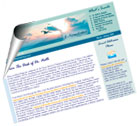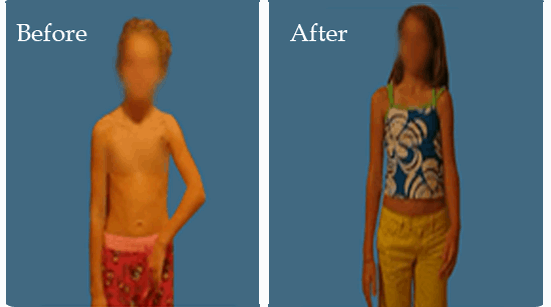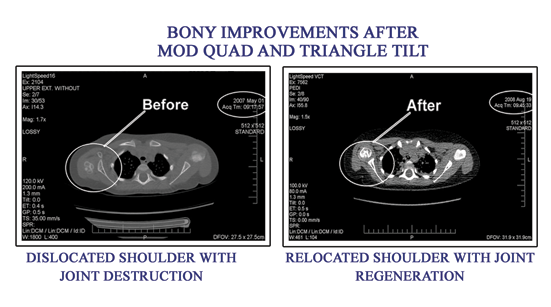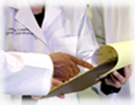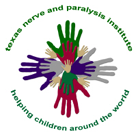|
Mod Quad FAQ
- What does “mod quad” mean?
- What is a “full mod quad” as compared to a “partial mod quad”?
- What is a “full pecs release” as compared to a “partial pecs release”?
- When did the anterior shoulder capsule release become part of the mod quad?
- Is this the same surgery called the “L'Episcopo Procedure” and/or the “Hoffer Procedure” and if not how do they differ?
- Will my child lose any function by having this surgery?
[movement to the middle of the body? (zippering)
movement to the back of the body? (reaching to the back pocket)]
- Will my child lose any function by NOT having this surgery?
- What is the best age to have this surgery done for the most benefit and why? Is a child ever too young or an adult ever too old to have this surgery and why?
- What kind of problems would occur over time if we decided not to have this recommended surgery done?
- Would more frequent and active therapy resolve the issues that necessitate this surgery?
Myofascial Release? Bracing or splinting? Electrical stimulation?
- Exactly what are you looking for when you evaluate a child for this? How does it present itself on a video?
- How long does the surgery take?
- How is the child immobilized after the surgery and for how long?
- Are there any restrictions in the post-op phase?
- What are the restrictions for the year following the mod quad?
- What kind of therapy will we need to do following this surgery?
- When I ask other parents about the results of the mod quad, most reply with very positive results and some respond with little or no result. Why would some children receive great gains and some children not receive little or no result?
- Is there a chance my child can become worse after surgery?
- Does a mod quad ever have to repeated and if so, why?
- What risks are associated with this surgery?
- Will a pec release (full or partial) affect the shape and size of my daughter's breast or son's chest as he/she reaches puberty and matures?
What does “mod quad” mean? back to top
The term “mod quad” is used to describe a surgical procedure adapted from the original “quad” surgery. The “modified quad” surgery is defined by the following procedures:
1. Latissimus dorsi contracture release and tendon transfer
2. Teres major contracture release and tendon transfer
3. Subscapularis muscle lengthening
4. Axillary nerve decompression & scar release
5. Anterior shoulder capsule release
6. Short head biceps release
7. Pectoralis minor release & lengthening
8. Pectoralis major release & lengthening
What is a “full mod quad” as compared to a “partial mod quad”? back to top
A partial mod quad surgery is a patient specific procedure that is used for more mild cases of contracture. The specific procedures of the mod quad that these patients require are determined during evaluation and can vary based upon range of motion, strength, etc.
What is a “full pecs release” as compared to a “partial pecs release”? back to top
Please see the above response.
When did the anterior shoulder capsule release become part of the mod quad? back to top
The anterior shoulder capsule release has always been a part of the mod quad. It is basically just loosening up the front of the shoulder joint soft tissue to allow better placement of the humeral head.
Is this the same surgery called the “L'Episcopo procedure” and/or the “Hoffer procedure” and if not how do they differ? back to top
No. Both the L'Episcopo procedure and the Hoffer procedure result in excessive external rotation and loss of abduction. The mod quad is designed to minimize changes in external rotation and abduction.
Will my child lose any function by having this surgery?
[movement to the middle of the body? (zippering)
movement to the back of the body? (reaching to the back pocket)]
back to top
There is the specific risk of weakness in strength associated with abduction (a gravity-assisted motion) and internal rotation (pledge of allegiance).
Will my child lose any function by NOT having this surgery? back to top
Persistent contractures of the shoulder and chest result in progressive loss of abduction and concomitant bony deformity of the shoulder. Growth and development are therefore impaired by long-term contractures.
What is the best age to have this surgery done for the most benefit and why? Is a child ever too young or an adult ever too old to have this surgery and why? back to top
The mod quad is performed commonly on patients from 6 months of age well into adulthood. It is a surgery of necessity. In other words, the deciding factor for treatment is the severity and extent of muscle contractures, not the age of the patient. Adults are never too old for mod quad surgery. However, adults often do not show the same degree of improvement as children for the following reasons:
1. tightening of the shoulder capsule, surrounding ligaments and vessels associated with age
2. established bony deformity associated with long-term contractures of the shoulder alter the physiology of the shoulder
What kind of problems would occur over time if we decided not to have this recommended surgery done? back to top
Problems commonly associated with long term muscle contractures in the arm include:
1. Long term growth abnormalities of the affected arm
2. Angulation and shortening of the arm
3. Progressive loss of arm function
These are a result of the tethering of bony and soft tissue effects that are associated with any major nerve injury.
Would more frequent and active therapy resolve the issues that necessitate this surgery?
Myofascial Release? Bracing or splinting? Electrical stimulation?
back to top
No.
Exactly what are you looking for when you evaluate a child for this? How does it present itself on a video? back to top
Tightness in shoulder joint and characteristic reduction in global abduction (arm above the head) are commonly present in children who need the mod quad surgery.
How long does the surgery take? back to top
This surgery is a 1.5 hour procedure. Patients stay for one night in the hospital to ensure proper splinting and positioning of the arm.
How is the child immobilized after the surgery and for how long?
back to top
The arm is splinted in a “statue of liberty (SOL) splint”. It is a half-torso, rigid body splint that maintains the position of the shoulder at 120 degrees oriented laterally (to the side). The elbow and wrist are well padded to protect the ulnar nerve. The arm is splinted in such a way to encourage motion at this height. The splint is worn 24/7 for two to four weeks based on the individual patient's needs. After that, it is worn an additional four weeks at nighttime only.
Are there any restrictions in the post-op phase?
back to top
No wetting of the incision area until it is completely closed. Passive range of shoulder should only include the upward movement. Please see the Post-Surgery Instructions for more details.
What are the restrictions for the year following the mod quad?
back to top
No internal rotation at this time until re-evaluation by Dr. Nath.
What kind of therapy will we need to do following this surgery?
back to top
At week eight (or ten), when splint is no longer worn at night, regular physical therapy and occupational therapy resumes, gradually and as tolerated. Restriction: No internal rotation at this time until re-evaluation by Dr. Nath.
When I ask other parents about the results of the mod quad, most reply with very positive results and some respond with little or no result. Why would some children receive great gains and some children not receive little or no result?
back to top
Many children present with initial muscle contracture and concomitant advanced bony deformity. In these cases, the mod quad is often the preliminary step in total joint reconstruction and further surgical care is required.
Is there a chance my child can become worse after surgery? back to top
It is possible, but Dr. Nath has never had this problem in the treatment of over 3500 cases.
Does a mod quad ever have to repeated and if so, why? back to top
The mod quad surgery must be repeated in less than 5% of cases. This is because of growth spurts that result in rapid elongation of the bone which cannot be accommodated by tendon length.
What risks are associated with this surgery? back to top
There is always the potential for general and specific complications associated with surgery. The general risks of surgery should always be considered seriously. According to Dr. Nath's experience, there is the specific risk of weakness in strength associated with adduction (a gravity-assisted motion) and internal rotation.
Will a pec release (full or partial) affect the shape and size of my daughter's breast or son's chest as he/she reaches puberty and matures?
back to top
Yes. However, contracture release resolves noticeable constriction of the breast and upper chest. |





